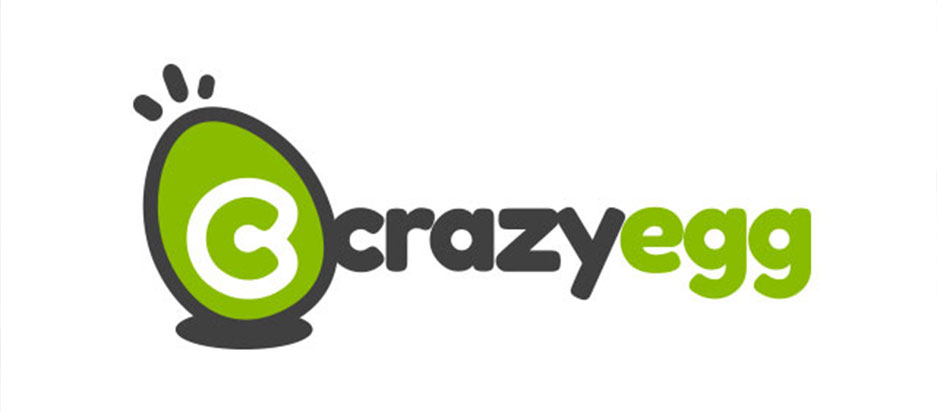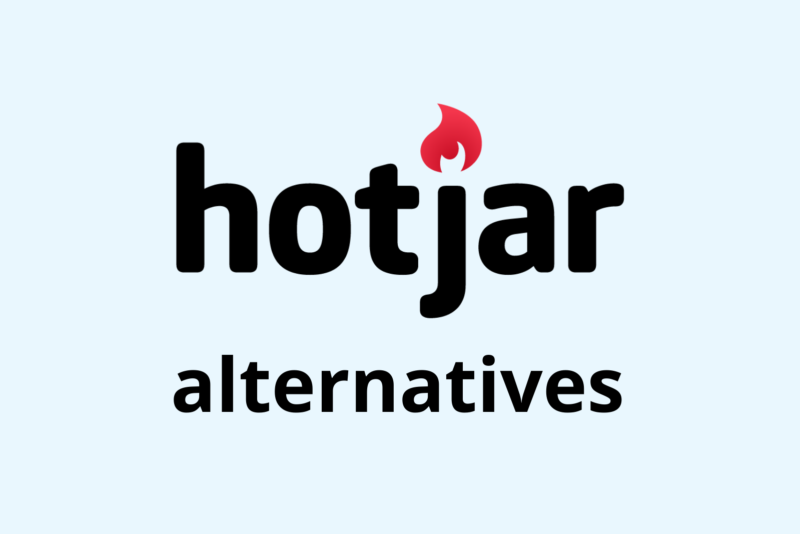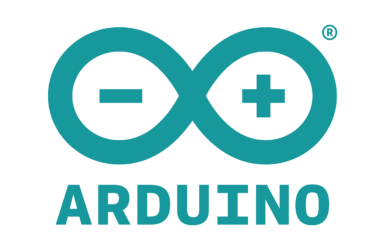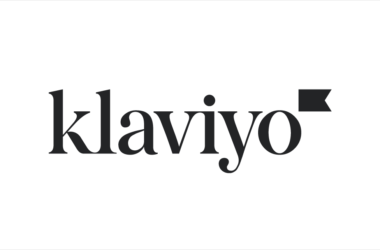Hotjar, a stalwart in the realm of web analytics and user feedback tools, has etched its presence with a robust feature set and intuitive functionalities. As we embark on this comprehensive exploration, we’ll dissect Hotjar’s features, acknowledge its limitations, and unravel the unique aspects that set it apart from the competition. While Hotjar has proven itself as a powerful ally for businesses seeking to optimize their online presence, the dynamic digital landscape prompts us to delve into Hotjar alternatives that might better suit specific needs.
Hotjar’s Features: A Closer Look

Hotjar’s allure lies in its multifaceted features, catering to businesses intent on refining their online strategies. Let’s delve into the key offerings that define hotjar’s prowess:
Heatmaps
Hotjar’s heatmap functionality provides a visually striking representation of user interactions on your website. This indispensable tool allows businesses to identify hotspots, understand user engagement, and optimize their site accordingly.
Session Recordings
Unlock invaluable insights into user behavior with Hotjar’s session recordings. By watching real-time user sessions, businesses can pinpoint pain points, optimize user journeys, and enhance overall website performance.
Surveys and Feedback
Hotjar facilitates direct communication with your audience through customizable surveys and feedback forms. This interactive approach empowers businesses to gather user opinions, preferences, and suggestions for continuous improvement.
Form Analytics
Optimizing online forms is crucial for user engagement. Hotjar’s form analytics feature provides detailed insights into user interactions with forms, helping businesses streamline and enhance the user experience.
Limitations of Hotjar
While Hotjar stands as a formidable tool, it’s essential to recognize its limitations to make informed decisions:
Limited A/B Testing
Hotjar’s A/B testing capabilities, though present, are not as extensive as those offered by dedicated testing tools. For businesses heavily reliant on thorough A/B testing, this may pose a limitation.
Pricing Structure
For some businesses, Hotjar’s pricing structure might prove restrictive, especially as they scale operations. Exploring Hotjar alternatives with more flexible pricing models becomes imperative for those seeking cost-effective solutions.
Complex Integration
Certain businesses may encounter challenges in integrating Hotjar seamlessly with their existing tech stack. Navigating complex integration processes can necessitate additional technical expertise.
Why Look for a Hotjar Alternative?

The decision to seek Hotjar alternatives isn’t a reflection of its inadequacy; rather, it stems from a desire for tailored solutions. Businesses may explore Hotjar alternatives for various reasons, each encapsulated in distinct subheadings:
1. Enhanced Feature Set
While Hotjar boasts a robust suite of features, some businesses may require a more specialized or expansive set of tools. Exploring Hotjar alternatives allows for a nuanced selection tailored to unique business needs, ensuring every aspect of user interaction is comprehensively addressed.
2. Budget Considerations
In the ever-evolving digital landscape, budget constraints often steer decisions. Businesses, especially those in their nascent stages, may find Hotjar alternatives that offer competitive pricing models without compromising on essential features. This subheading explores the financial aspect of seeking Hotjar alternatives.
3. Seamless Integration
For some businesses, the ease of integration with existing tech stacks is a pivotal factor. Navigating a complex integration process can be time-consuming and resource-intensive. Therefore, exploring Hotjar alternatives that seamlessly integrate into the existing infrastructure ensures a smoother transition and optimal utilization of the chosen tool.
4. Specialized Industry Requirements
Certain industries demand unique functionalities that may not be fully addressed by Hotjar. In such cases, businesses may seek Hotjar alternatives that cater specifically to their industry’s requirements, ensuring a more tailored and effective solution.
Commonly Used Hotjar Alternatives For Web Analytics and User Feedback

Diving into the rich pool of Hotjar alternatives unveils a diverse array of options. Let’s delve into each of these Hotjar alternatives, exploring their unique strengths and functionalities:
1. Crazy Egg
Renowned for its heatmap and user behavior analysis, Crazy Egg stands out as a robust Hotjar alternative offering visually intuitive insights into how users interact with their websites. Its heatmap functionality provides a detailed breakdown of user engagement, pinpointing areas of interest and potential improvement. Additionally, Crazy Egg goes beyond mere visualization, providing businesses with actionable data to enhance their overall user experience.
2. Mouseflow
Mouseflow takes user insights to the next level by offering session replay, heatmaps, and funnels. This comprehensive tool provides a detailed view of user journeys and behaviors, enabling businesses to identify patterns and pain points. With its intuitive interface, Mouseflow empowers users to dissect user interactions, understand navigation hurdles, and optimize the website accordingly. The platform’s ability to offer real-time insights ensures businesses stay agile in addressing user concerns promptly.
3. FullStory
FullStory goes beyond basic analytics with its session playback, heatmaps, and in-depth analytics. This tool is a powerhouse for gaining a profound understanding of user interactions and refining the user experience. The session playback feature allows businesses to witness user journeys firsthand, facilitating a granular analysis of user behavior. Coupled with robust analytics tools, FullStory enables businesses to make data-driven decisions, uncovering hidden insights that can significantly impact website optimization strategies.
4. Lucky Orange
Lucky Orange distinguishes itself by offering more than just heatmaps. It provides live chat and visitor recordings, allowing businesses to analyze user behavior in real-time and address concerns promptly. Beyond passive analysis, Lucky Orange fosters direct engagement with users through live chat, turning insights into actionable improvements. The integration of visitor recordings further enhances the depth of understanding, providing a comprehensive picture of how users interact with the website.
5. Inspectlet
Inspectlet’s comprehensive suite includes session recording, heatmaps, and form analytics. This tool provides businesses with a nuanced perspective on user interactions, aiding in data-driven decision-making. The session recording feature allows for the detailed examination of user journeys, helping identify pain points and areas for improvement. Coupled with form analytics, Inspectlet equips businesses with the tools to optimize conversion funnels and enhance overall website performance.
6. SessionCam
Specializing in session replay, heatmaps, and conversion funnel analysis, SessionCam empowers businesses to enhance website usability and optimize user journeys. The session replay feature offers a detailed walkthrough of user interactions, shedding light on navigation challenges and opportunities for improvement. SessionCam’s focus on conversion funnel analysis ensures businesses can fine-tune their sales or conversion processes, maximizing the impact of their online presence.
7. Clicktale (now Contentsquare)
As part of Contentsquare, Clicktale focuses on customer experience analytics, offering session replay and heatmap features. This tool is designed to elevate the understanding of user interactions and drive UX improvements. Clicktale’s integration with Contentsquare enhances its capabilities, providing businesses with a holistic approach to user experience optimization. The heatmap features offer visual insights into user engagement, complementing the in-depth analysis provided by session replays.
8. Matomo (formerly Piwik)
Matomo, an open-source alternative, offers features similar to Google Analytics, including robust heatmap capabilities. This platform’s open-source nature provides businesses with the flexibility to customize and tailor their analytics solutions according to their unique needs. Matomo’s heatmap features offer a visual representation of user interactions, allowing businesses to identify trends and areas for improvement. With its commitment to data privacy, Matomo stands as a viable Hotjar alternative for businesses prioritizing user information security.
9. VWO (Visual Website Optimizer)
VWO brings A/B testing, split URL testing, and heatmap features to the forefront. This tool is ideal for businesses looking to optimize their websites and enhance overall user experience. VWO’s A/B testing capabilities allow businesses to experiment with different variations, refining their websites based on real-time user feedback. The integration of heatmap features provides visual insights into user behavior, facilitating a comprehensive approach to website optimization.
10. Optimal Workshop
Optimal Workshop specializes in usability testing, offering tools such as card sorting, tree testing, and more. This suite of features is designed to optimize website navigation, ensuring a seamless user experience. Optimal Workshop’s usability testing tools empower businesses to understand how users interact with their websites, identify navigation challenges, and streamline user journeys. The combination of card sorting and tree testing offers a holistic approach to information architecture, allowing businesses to create user-friendly and intuitive websites.
Factors To Consider While Choosing The Perfect Hotjar Alternative

As you navigate the sea of alternatives, several factors should guide your decision-making process. Choosing the ideal Hotjar alternative is a multifaceted task that demands careful consideration. Let’s delve into these crucial factors, each unraveling a specific dimension of the decision-making process:
1. Feature Set
When contemplating a switch from Hotjar, the first factor to scrutinize is the feature set offered by potential alternatives. Consider the unique needs of your business and assess whether the alternative provides a comprehensive suite of tools. It’s not just about matching the features of Hotjar but exceeding expectations. Look for innovations and functionalities that align with your specific goals, ensuring the selected tool becomes an asset rather than a mere replacement.
Beyond the basics of heatmaps and session recordings, explore additional features that could elevate your analytics and user feedback capabilities. Some Hotjar alternatives might offer advanced analytics, real-time collaboration, or even AI-driven insights. Evaluating the feature set in detail ensures that the chosen alternative is not only a match for your current needs but also a future-proof solution as your business evolves.
2. Pricing Structure
In the ever-evolving digital landscape, budget constraints often steer decisions. While Hotjar has its pricing structure, alternatives might offer more flexible models that align better with your financial considerations. Take a meticulous approach to analyzing the pricing plans of potential alternatives. Look for transparency in costs, scalability options, and any hidden fees that might impact your budget.
Consider your growth trajectory and assess whether the alternative pricing model accommodates your evolving needs. Some alternatives offer tiered pricing, allowing businesses to scale their usage without a significant financial burden. Others might provide customizable plans tailored to your specific requirements. By thoroughly understanding the pricing structure, you ensure a cost-effective solution that maximizes the value of your investment.
3. Integration Ease
Smooth integration with your existing tech stack is paramount. Assess the compatibility of each alternative, minimizing potential disruptions during implementation. A user-friendly integration process is key to maximizing the benefits of the chosen tool. Delve into the technical aspects of integration, considering factors such as API capabilities, third-party platform compatibility, and the level of technical support provided by the alternative.
Explore whether the alternative seamlessly integrates with the tools you currently use, enhancing your overall workflow rather than causing friction. Look for case studies or user testimonials that highlight successful integrations, providing insights into the practical aspects of implementing the chosen alternative. An integration process that aligns with your technological ecosystem ensures a smoother transition and quicker realization of the tool’s benefits.
4. Customer Support
The quality of customer support can make a significant difference in your experience with a Hotjar alternative. Responsive and knowledgeable support becomes particularly crucial when navigating complex features, addressing technical challenges, or seeking guidance during implementation. Evaluate the customer support offerings of each alternative, considering factors such as response times, availability, and the depth of technical expertise provided.
Look for alternatives that offer various support channels, including live chat, email, or phone support. Assess whether the alternative provides onboarding assistance, training resources, and a dedicated account manager. A robust customer support system ensures that you have a reliable partner to turn to when challenges arise, maximizing the efficiency of your team and the effectiveness of the chosen alternative.
5. Scalability
Anticipate future growth and ensure that the chosen alternative can scale alongside your business. While Hotjar might have served your current needs, the ideal alternative should be capable of evolving with your expanding requirements. Explore the scalability options offered by each alternative, considering factors such as user limits, data storage capacity, and performance under increased workloads.
Evaluate the success stories of businesses similar to yours that have scaled their operations with the chosen alternative. Assess whether the tool provides flexibility in upgrading plans or adding additional features as your user base grows. A scalable solution ensures that your investment in a Hotjar alternative remains relevant and valuable in the long term, adapting to the dynamic nature of your business.
Conclusion
In the dynamic landscape of web analytics and user feedback, Hotjar has undeniably left an indelible mark. However, the pursuit of perfection beckons us to explore alternatives, each offering its unique blend of features and advantages. Armed with insights into Hotjar’s strengths and limitations, businesses can navigate through a diverse array of alternatives. By understanding specific needs, exploring features, and weighing critical factors, the perfect Hotjar alternative awaits—a solution that propels your online presence to new heights.









